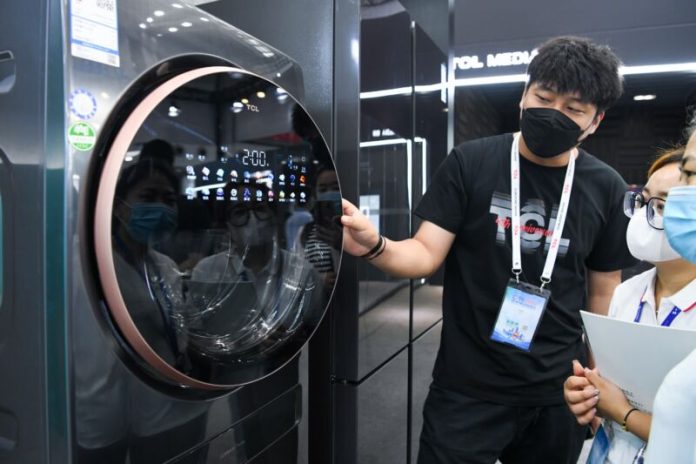Enlarge / The circuitry increasingly found in every modern device adds another layer of complexity to repairing the things you own.
Getty Images
The Federal Trade Commission is considering new rules that would require that all devices advertising a familiar yellow EnergyGuide label also “contain information about how consumers can repair their products.”
Citing its own “Nixing the Fix Report,” the FTC states that repair information “will bolster consumers’ right to have damaged products repaired without having to return to the manufacturer.” That could save customers money, allow unlicensed dealers and repairers to compete better, and protect the environment, the FTC claims.
Supporters of the right to repair are motivated by the proposed rulemaking, which was unanimously approved for publication. “This is a big deal,” Kyle Wiens, CEO of iFixit, repair consultant and distributor, wrote Monday. “It’s hard to imagine the FTC enacting a more impactful, consumer-focused repair policy, or a safer way to put repair manuals in the hands of more consumers who need them.” Wiens noted that device manuals, whether provided by the company or by iFixit members on the company’s wiki-like website, are harder to come by than small electronics. Most people don’t want to take apart devices that weigh hundreds of pounds and draw strong energy or flammable gas to learn more about them.
Nathan Proctor, head of Right to Repair at the US Public Interest Research Group, said in a press release that “the inclusion of repair requests as part of the Energy Guide program is right for the planet and important for consumers.”
Advertising
What will be critical to any proposed repair information request is access to device firmware and software: diagnose, reset alerts, and enable repairs beyond the basics. If a consumer repair manual instructs you to use a software tool to complete the installation of a new belt or filter, but that software program is not available or costs hundreds of dollars, an FTC-mandated manual does not bolster anyone’s right to a repair.

Devices are replaced faster. The feasibility of the repair plays a not inconsiderable role.
Getty Images
$900 to see a $20 fuse needs replacing
GE Appliances, a division of appliance giant Haier, provides licensed technicians with a SmartHQ service. SmartHQ allows repair workers to “communicate directly with equipment for real-time diagnostics.” The service also provides service manuals for devices. When you sign up for the service, you get a mobile app, how-to videos, tech support, and a wearable Bluetooth module that connects to devices. Registration without GE Appliances Authorized Servicer status costs $919 when paying for a full year upfront. $720 of this fee is access to the mobile and web versions of SmartHQ.
Almost every major brand of equipment has a similar “authorized” or licensed repair program. They vary in scope and scope from a “nice to have” diagnostic tool to essential devices that unlock and reactivate devices that have malfunctioned. Equipment manufacturers probably won’t readily provide their customers with the same service that they sell to repair companies for hundreds of dollars a year.
Parts availability is another potential downside — or gap — to requesting a repair manual. When a manufacturer doesn’t provide the parts needed for common repairs, or requires software to authorize those parts and pair them with the device, a repair manual is more of a dream journal than a learning tool.
Advertising
It’s not impossible for a company to open up part of its licensed repair network – paired parts and exclusive software and all – under repair pressure. Apple, which has long resisted consumer self-service repairs, launched a self-service repair program in April. Customers can purchase parts, rent specialty tools and use detailed manuals to repair their phones, and then authorize the parts for their devices through a web service. The process involves providing all relevant serial numbers to Apple; However, most people would be a little less wary of LG if they knew they had a new belt in their dryer.
I had the experience of fixing my mother’s stove, which worked fine until one day it stopped working. A circuit board in the console had a visibly damaged capacitor, causing the stove to reset unreliably during use. The actual heating/circulation aspects of the furnace worked well but could not be controlled. I spent days looking for a replacement circuit board on high markup websites, eBay, and authorized dealers, but ended up having to help my mom buy a new model. The appliance store hauled away the old stove and I doubt it was made ready for a new home.
Legislation on the right to repair has stalled
These types of repair pitfalls are spurring right-to-repair legislation, with bills active in more than half of the US states and at the federal level. The New York State Legislature in June passed the first such law that would require electronics manufacturers to provide individuals with the same diagnostic and repair tools and parts that they provide to their own repair technicians. New York Gov. Kathy Hochul has yet to sign the law into law.
The FTC’s proposed rulemaking, which was unanimously agreed to be released, also aims to potentially change and expand labeling for a range of products, including air purifiers, humidifiers and cooktops, and to make EnergyGuide labels more accessible to people who Buy devices online.
Disclosure: The author previously worked for iFixit. He has no financial interest in the company.
arstechnica.com
https://arstechnica.com/tech-policy/2022/10/the-ftc-is-looking-at-fixing-appliance-repair-but-it-needs-to-go-beyond-manuals/











